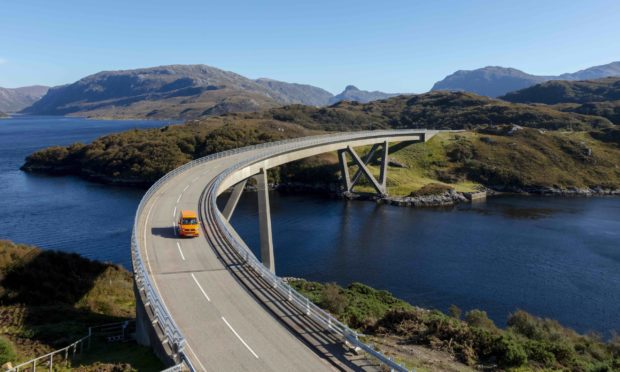More than three-quarters of would-be visitors to the North Coast 500 (NC500) have said they will come to the area once government restrictions are lifted, a survey has revealed.
Thousands put their travel plans on hold due to the coronavirus pandemic – but more than 80% of the 4,000 respondents have said they will visit once the Scottish Government gives the go-ahead.
The survey, which took place between Friday June 5 and Friday June 12, asked potential visitors from across the UK, Europe and rest of world if their plans had been affected.
The majority responded that the pandemic has had no impact on their plans to tour the route within the next six to 12 months.
Tom Campbell, executive chairman of NC500 Ltd, who organised the survey, said: “It’s extremely encouraging to see that a significant number of visitors are already rescheduling their plans to visit the NC500 this summer, into 2021 and beyond.
“This really is a positive sign for the re-emergence of the tourism industry in the north Highlands.
“The breath-taking natural scenery, wide-open green spaces, majestic mountain ranges, sandy beaches and rugged coastline of the NC500 are key factors that will draw visitors back to the region and away from larger towns and cities after lockdown.”
Of those surveyed, 20% said they have had to cancel their visit to the NC500 entirely, with 6% no longer planning to visit the region at all due to the crisis.
With international tourism unlikely to return this year, it is thought that more Scots will look north to take on the 516-mile route.
Mr Campbell added: “We’re expecting to see more UK visitors heading to Scotland and driving and cycling will be the way people will want to take their holidays.
“As we all begin to think about what life might look like beyond the coronavirus pandemic, we know that the stunning natural landscape of NC500 remains reassuringly unchanged and will continue to inspire people from around Scotland, the rest of the UK and beyond when it’s safe to travel.
“As we start to plan for the reopening of tourism in the north Highlands, NC500 will continue to work to help deliver a balance between economic recovery and public safety.”
The route – fast becoming known as Scotland’s version of America’s famed Route 66 – marks its fifth anniversary this summer with it estimated to have boosted the economy by £22.9 million and created around 179 full-time roles.
The survey has also revealed that the majority of potential visitors will remain in the area for approximately 11 days, up two on the previous average of nine.
NC500 is currently assisting providers along the famed stretch advice on how to implement measures to protect the health of all involved.










